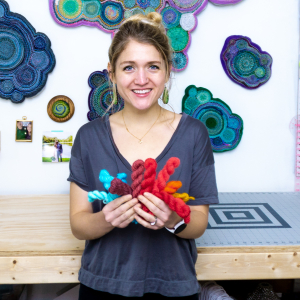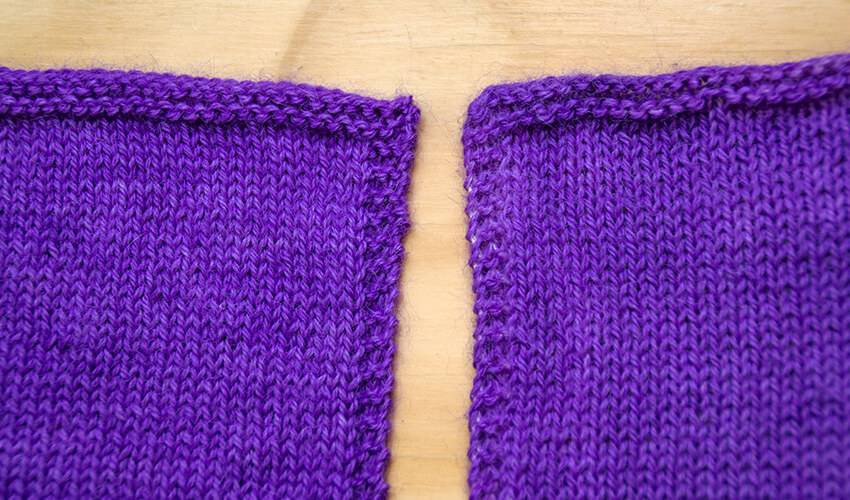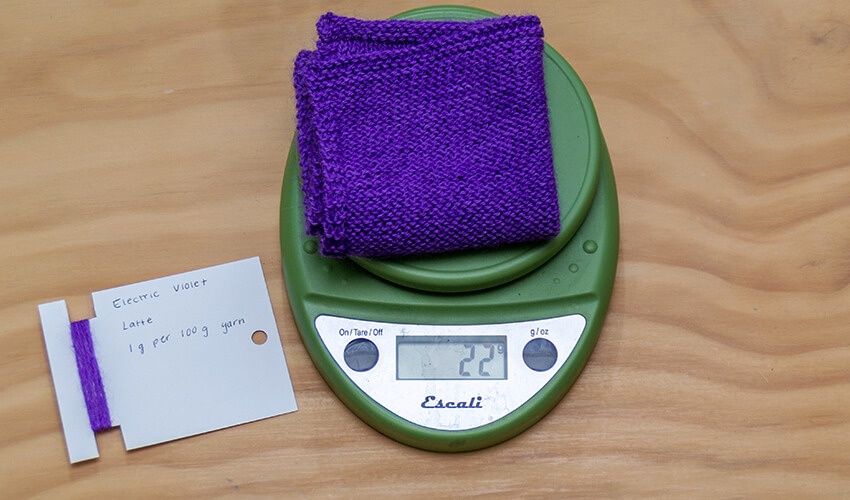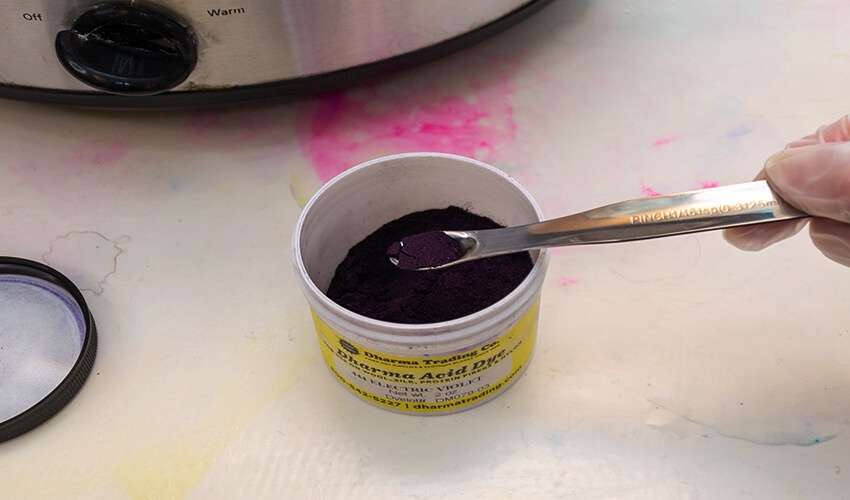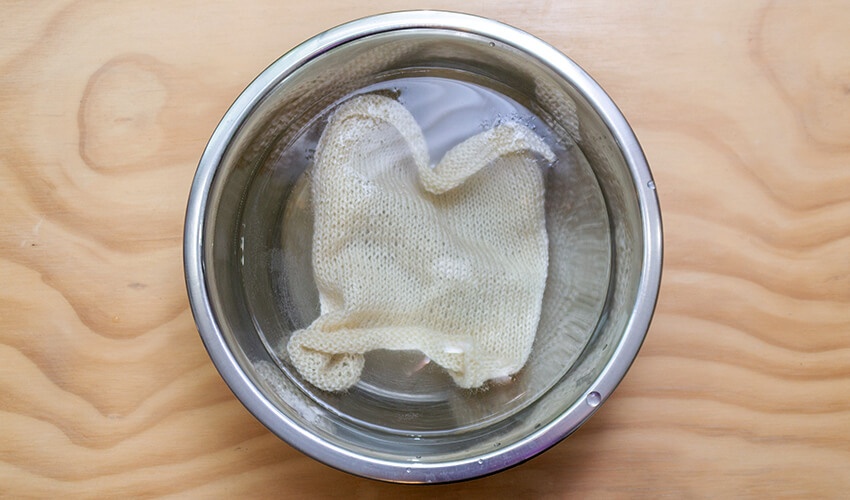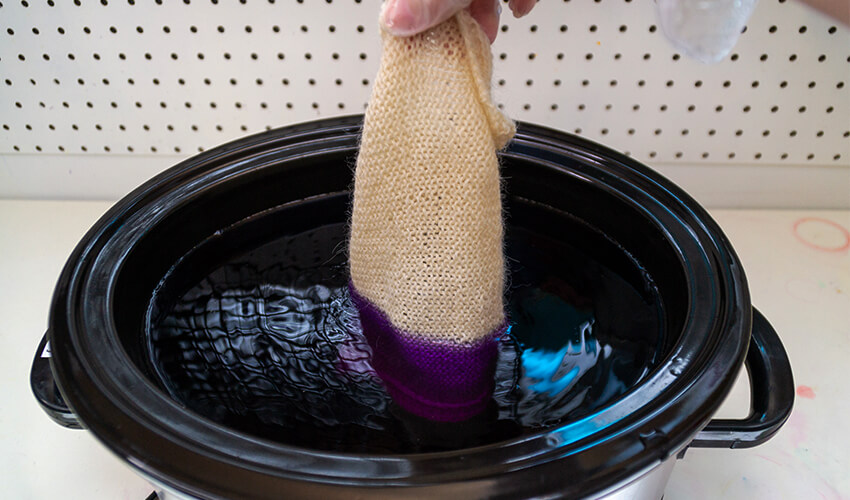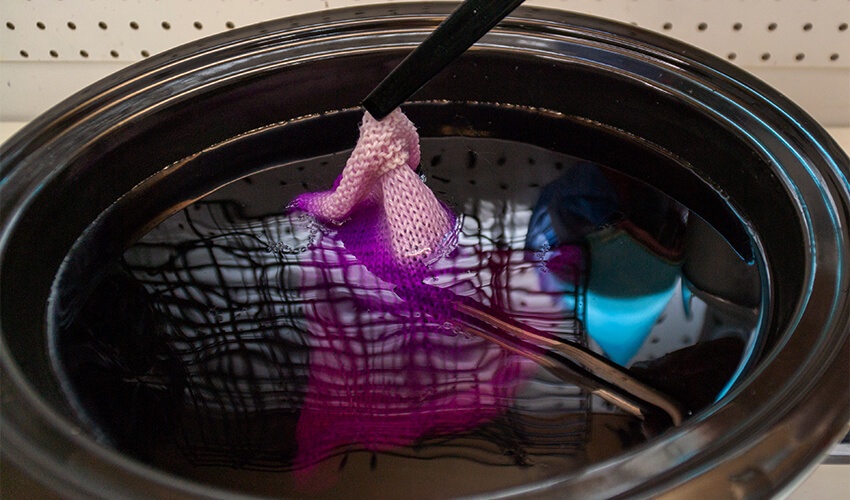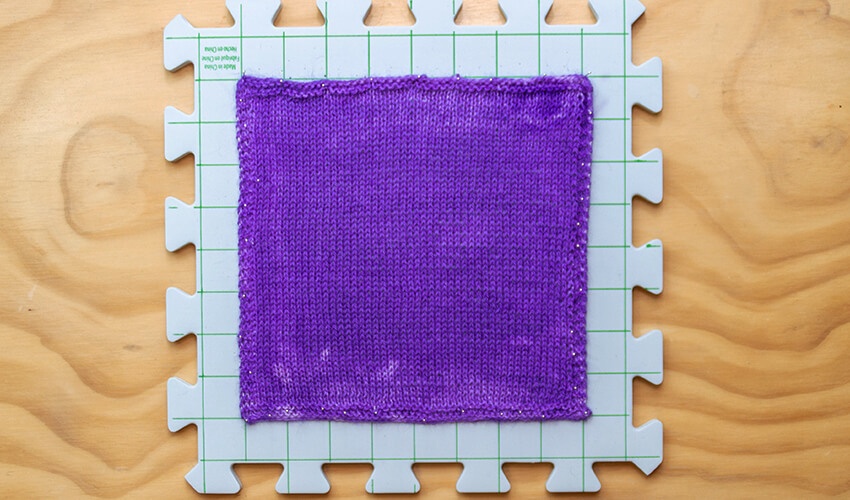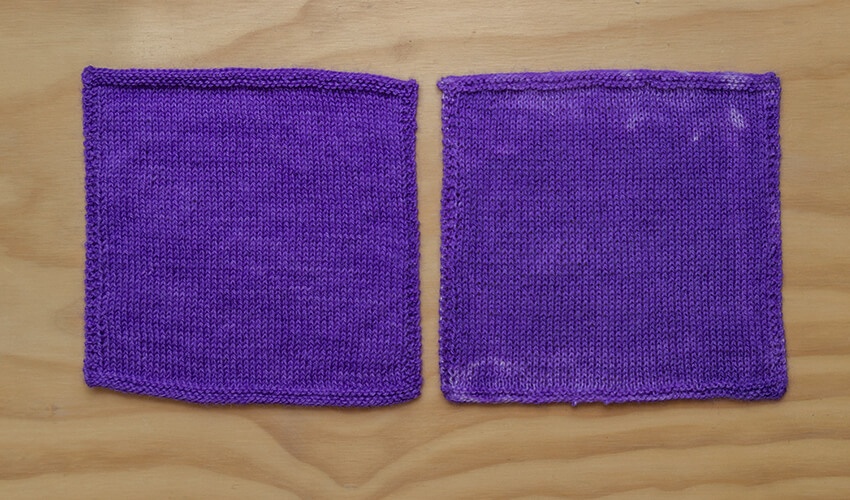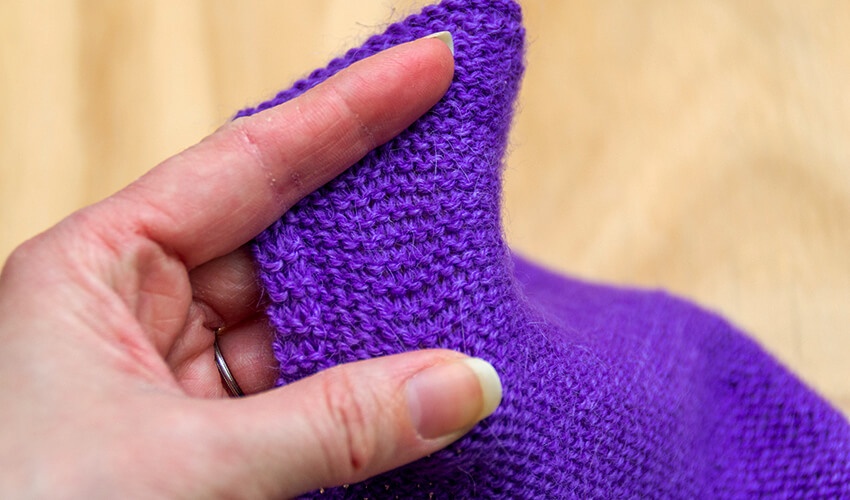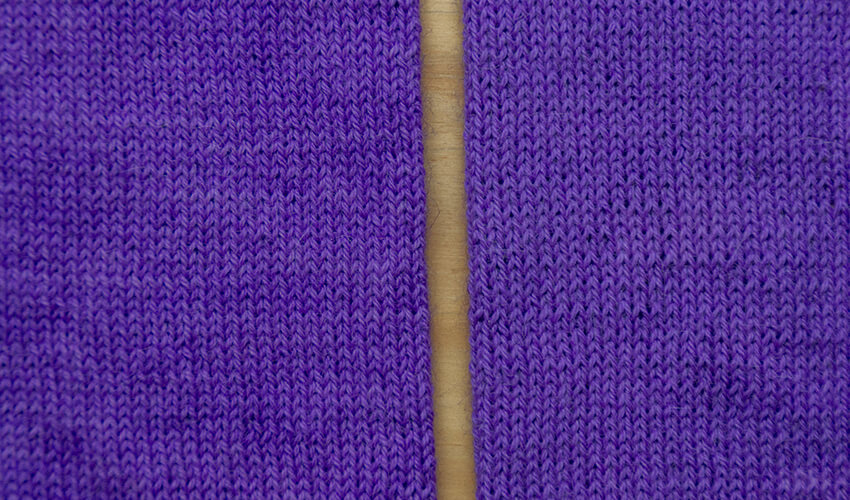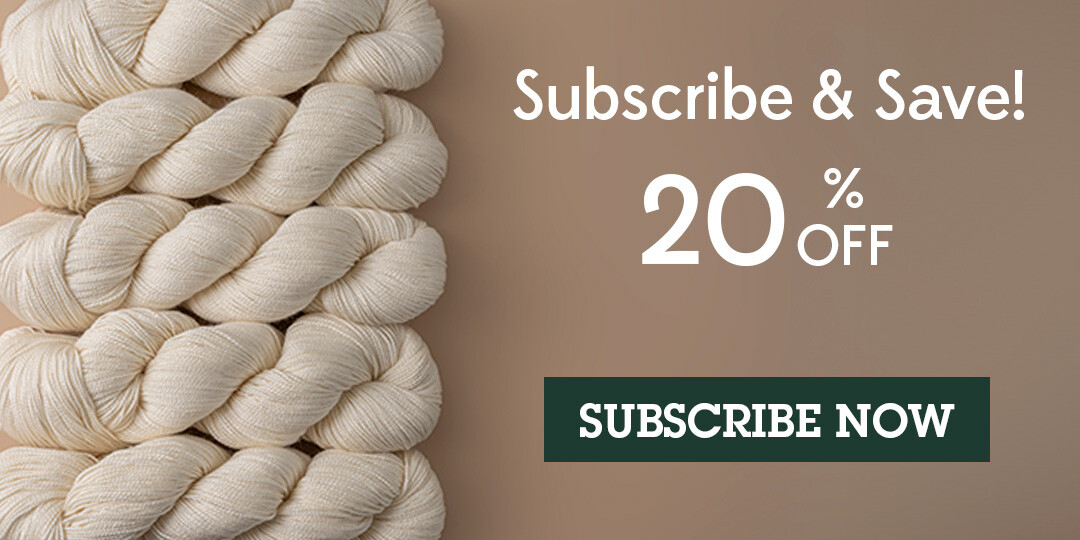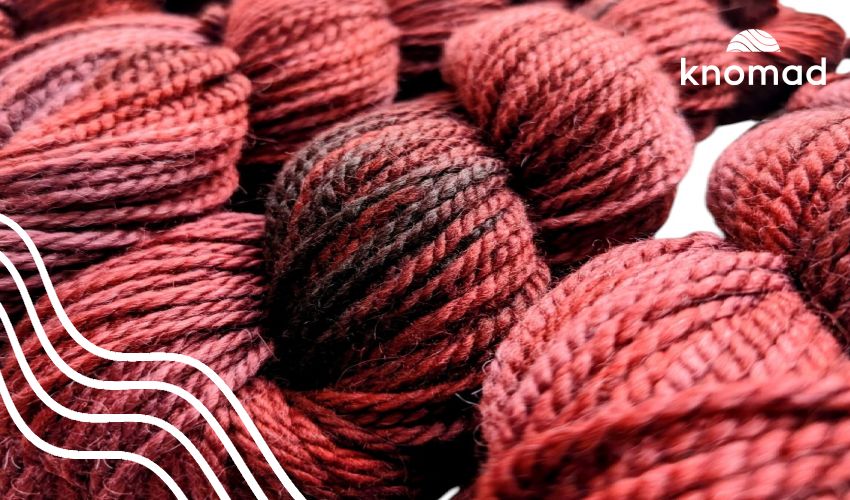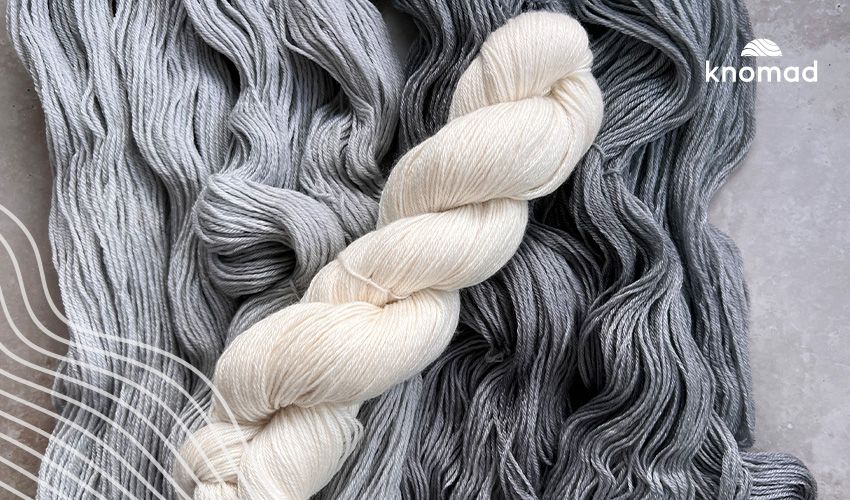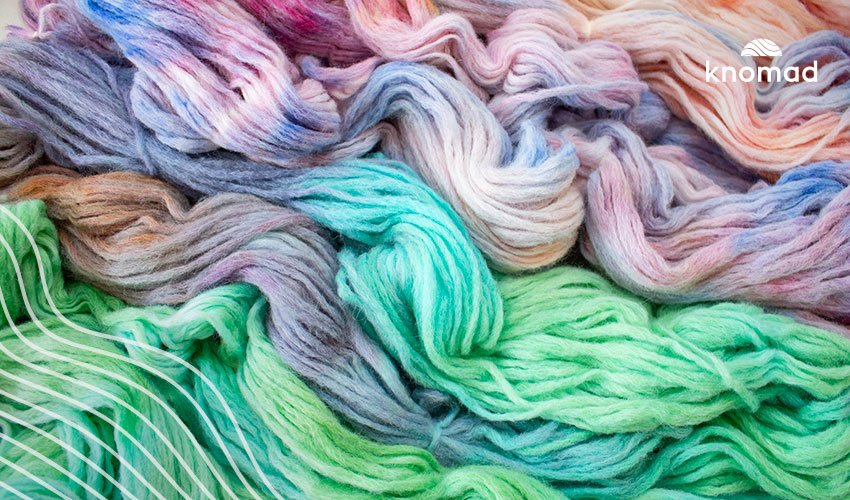Garment Dyeing Knits with LATTE
Garment dyeing is the process where a garment is dyed after it is finished. This is handy if you want to knit or crochet something in undyed yarn and want to dye it when you are done. This can also be used to over dye something that is already finished if you want to shift the color. Today on the blog we will go over the process to garment dye a large knit swatch in LATTE 100% baby alpaca yarn and compare it to a swatch that was knitted with dyed yarn. We will also talk about when you may want to choose to garment dye something instead of dyeing the yarn first.
To garment dye any finished object made with a protein fibre, the best process is to acid dye it. Protein fibres like wool, alpaca, and silk all dye through a combination of heat, acid, and dye. Many yarns are made of a blend of fibres, so as long as the majority of the fibre composition is a protein fibre, acid dyeing will work.
THE SWATCHES
Today we are using LATTE which is 100% baby alpaca. This sport weight yarn is so soft and has a lovely drape when knitted. It is one of my personal favorites for garments that will touch the skin like a cozy cowl or hat. For this post, I knitted up two large swatches with LATTE on US size 4 needles. I cast on 54 stitches using a long tail cast on. The first and last four rows of each swatch were knitted in the garter stitch. There is a garter stitch border on either edge that is three stitches wide. The rest of the swatch was knitted in the stockinette stitch. One swatch was knitted with LATTE yarn that was dyed already and the other swatch was knitted in undyed yarn and dyed afterwards. Blocked, each knitted swatch measures eight inches square.
GENERAL PREPARATION
Keeping a dyer’s journal is helpful when you are preparing to garment dye a finished object. The yarn used in the dyed yarn swatch was Electric Violet by Dharma Trading Co. I was able to find my notes from that dye bath and see that I had used one gram of dye to 100 grams of yarn. I weighed the swatch knitted with the dyed yarn from that skein to see how much yarn was used to knit it and it was 22 grams. To maintain this ratio so each swatch is the same color and saturation, I needed 0.22 grams of Electric Violet dye. Some gram scales will weigh down to the 0.01 gram, but mine will not so I found an online calculator to give me an idea of how much dye to use and I used 1/16 teaspoon of Electric Violet dye.
A good rule of thumb is one gram of dye for every 100 grams of yarn to achieve a medium depth of shade. You can increase or decrease the amount depending on how deeply saturated you would like to dye your yarn or finished garment. When I dye samples for my own reference, this is the measurement I use. While you are preparing your knitted or crocheted garment for dyeing, weighing it will tell you how much dye to prepare.
Another consideration is the size of your dyeing vessel. For something small like a hat, small cowl, socks, or gloves, a dye vessel in the range of six to eight quarts would work just fine. If you are dyeing a shawl, sweater, vest, or anything that is on the larger side, you’re going to want to find a larger dyeing vessel. For an immersion based dye like this one, a large vessel will give room for the water to flow around the garment fully creating a more even dye application. If the garment is squished into the space, that will leave uneven spots.
DYEING METHOD
The process to prepare and dye a knitted garment for dyeing is nearly the same as the process used to dye a skein of yarn. Before the presoak phase, you will need to weigh your garment to calculate how much dye to use. Then prepare your garment for dyeing with a thorough presoak.
While your garment is presoaking, mix and measure your dye into your dye vessel. Make sure to wear a respirator and gloves when working with powdered dyes. Dissolve your acid of choice into the dye bath at this time as well. I prefer to work with powdered citric acid, but white vinegar works well too.
Once your garment is presoaked, you can add it to the dye bath. Once it is added to the dye bath, you will add heat to set it. Keep an eye on it while it is dyeing because you will want to gently move the garment a few times during the dyeing process to make sure the dye flows evenly around the garment to prevent any uneven splotches. Once the dye bath has exhausted, meaning the surrounding water is clear, turn off the heat and allow the garment to cool. Rinse it just like you would a skein of yarn. [link rinse to rinse dyed yarn blog post]
BLOCKING
Once your knitted garment is dyed, cooled, and rinsed, this is the perfect time to block it! Squeeze out all of the excess water by placing your knitted garment between two towels and rolling them up like a jelly roll. Lay your garment out on a blocking mat and pin it into its final shape. For the swatches, I knew they should be about 8 inches by 8 inches so I pinned them according to that measurement. If you do not have a blocking mat, you can use towels or an ironing board as your blocking surface. My knitted swatch of LATTE took a little over a day to dry on the blocking mat.
SWATCH COMPARISON
Now that both LATTE swatches have been knitted, dyed, and blocked, we can compare the two dyeing methods! The swatch on the left was knitted with dyed yarn and the swatch on the right was garment dyed.
I have found that knitting with dyed yarn shows off the natural subtle variations that occur in hand dyeing so you can see small shifts in color throughout the knit. The garment dye swatch can provide a more even saturation.
There are lighter areas where the yarn overlaps and the dye could not penetrate as easily. You can see the difference here when you stretch the knit to see the yarn that was sitting under the stitches while it was dyed. This effect can be used to your advantage if you are wanting to create a more heathered look in your hand knit garment.
There are some areas on my garment dyed swatch where it curled quite stubbornly in the dye bath leaving some lighter areas. This can work to intentionally lighten some areas more than others if you like the look of subtle variation. If you do not, these are simple to remedy by mixing a small dye solution and hand painting on the dye to those sections specifically and then steam setting the dye. Read more about hand painting here and steam setting here.
WHEN TO GARMENT DYE
This post only covers one method of garment dyeing: immersion dyeing. Many of the other yarn dyeing methods covered on the blog like speckle dyeing, dip dyed ombre, hand painting, and more can also be used to garment dye. Transferring these different methods to undyed yarn that has already been knit creates a different effect and allows you the control to choose where on your finished garment you would like to have different colors or ensure that a garment that was knitted with multiple skeins of yarn is dyed the same color in the same dye bath. This level of control can be quite appealing and lead to beautiful results!
Have you garment dyed your knits before? Let us know how it went in the comments! And don’t forget to share what you create with us on social media #knomadyarn and @knomad_yarn, we can’t wait to see what you make!
Tags: latte
